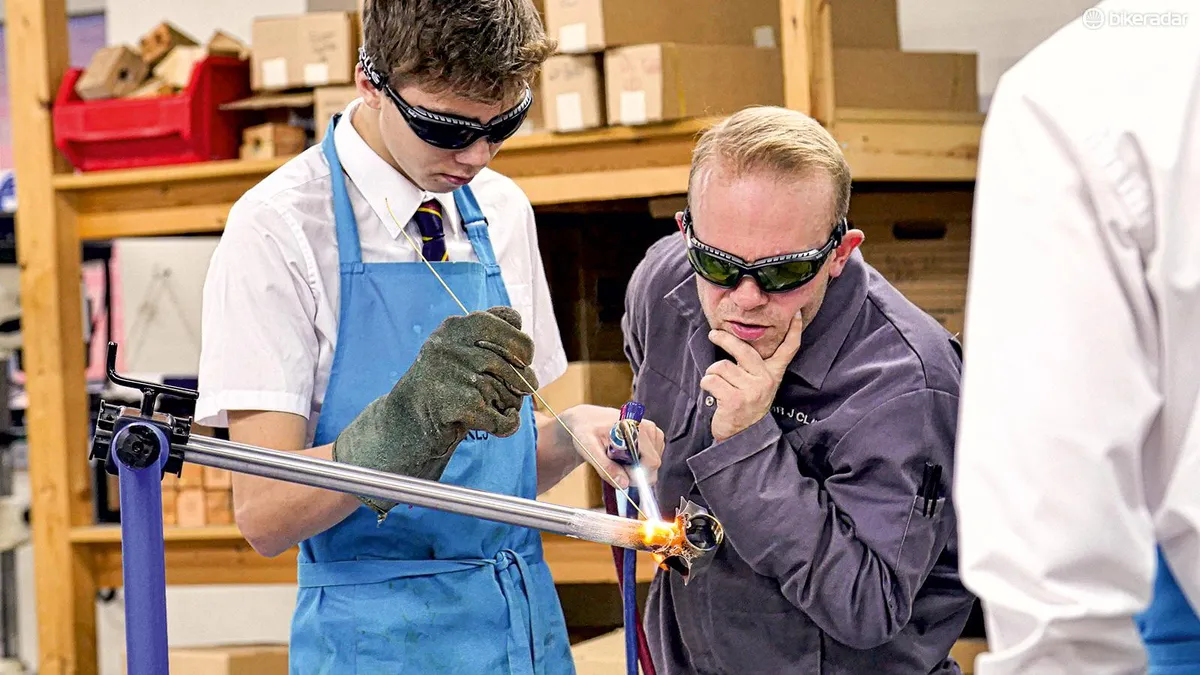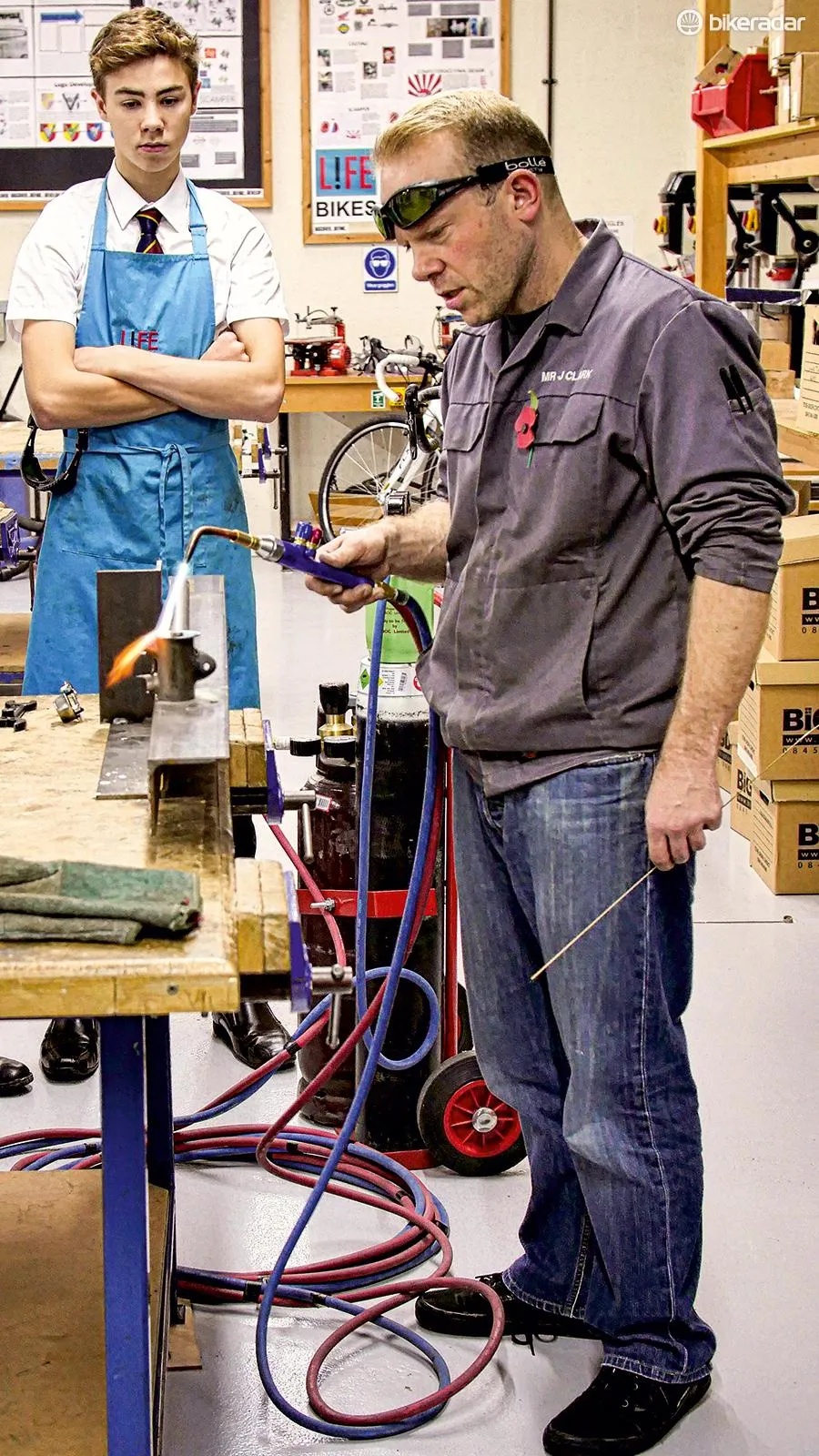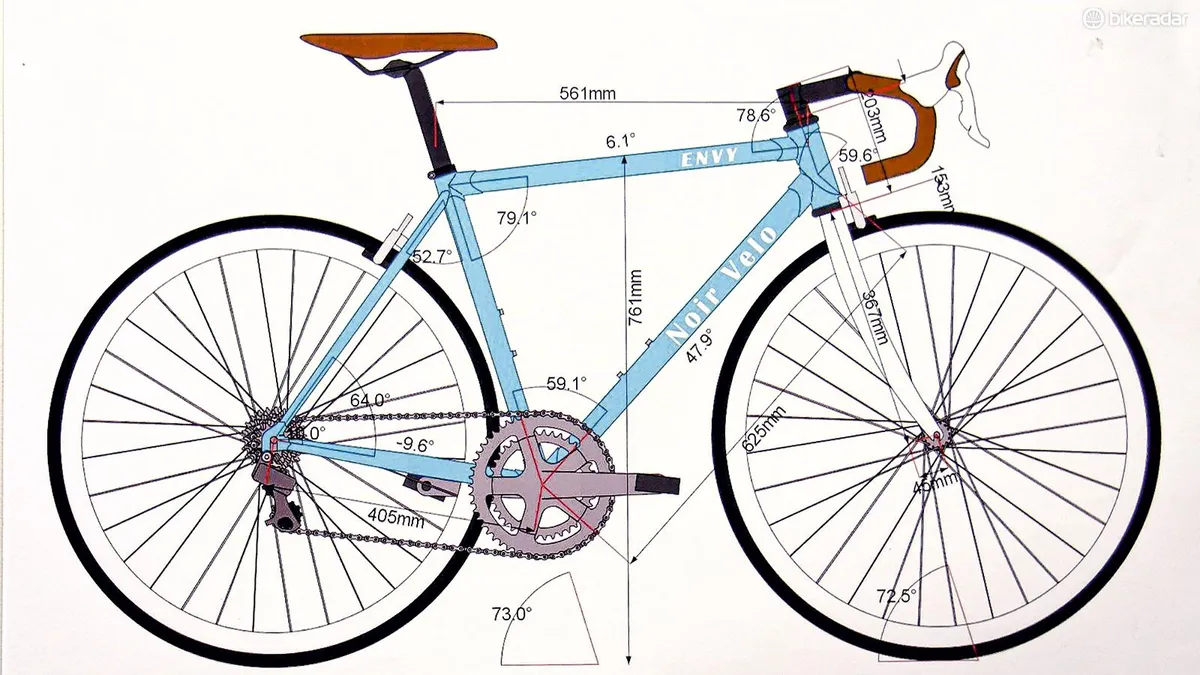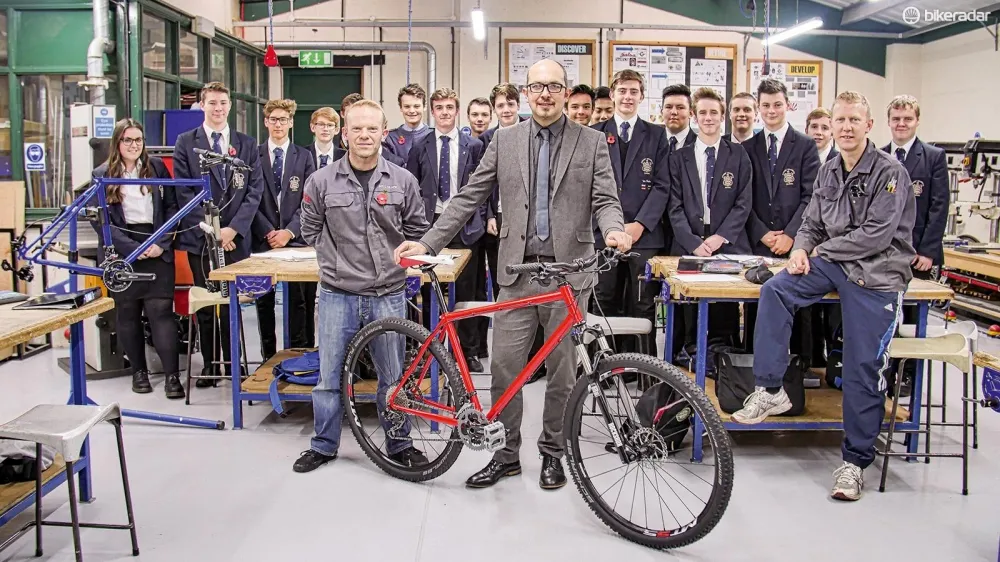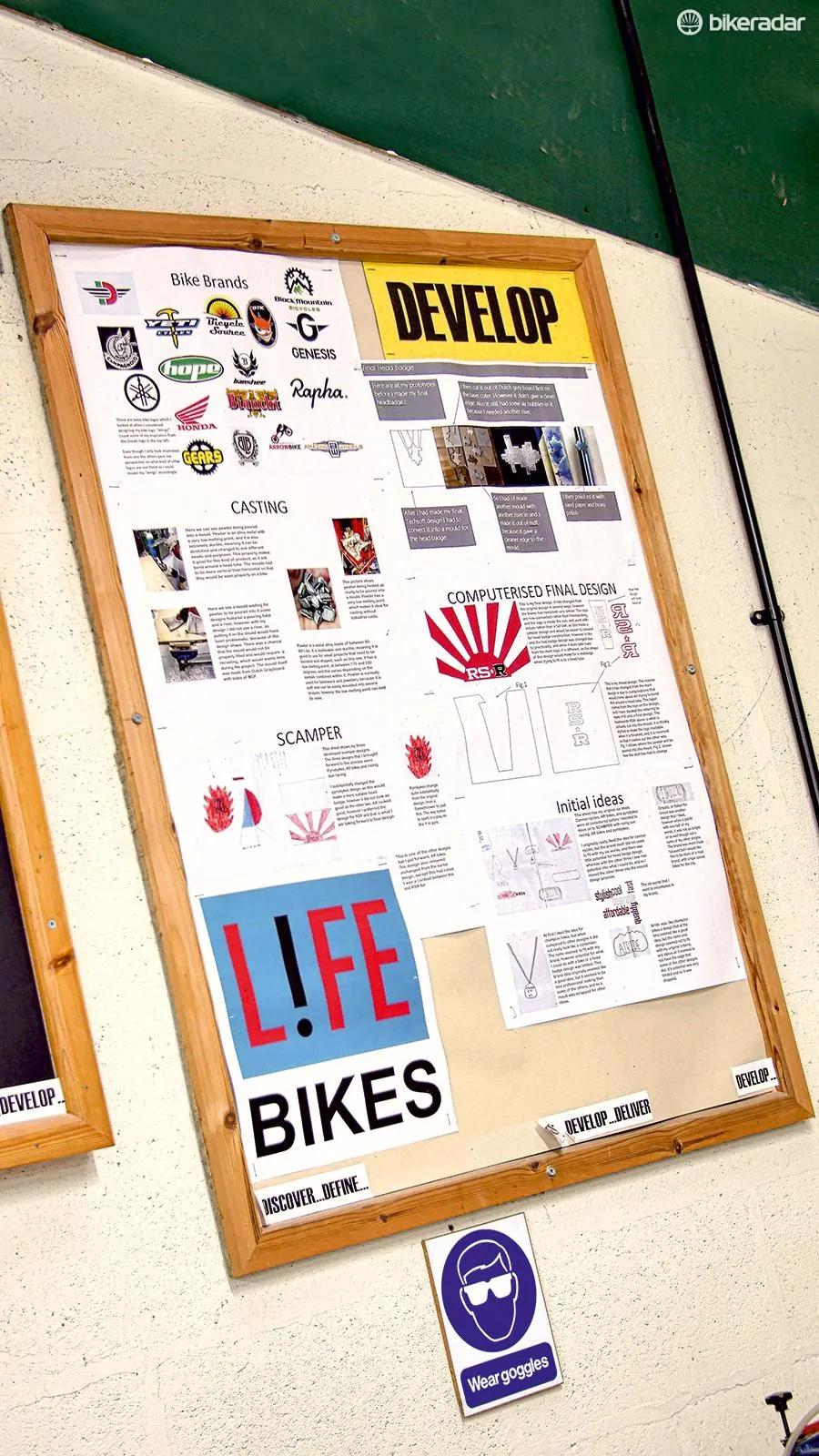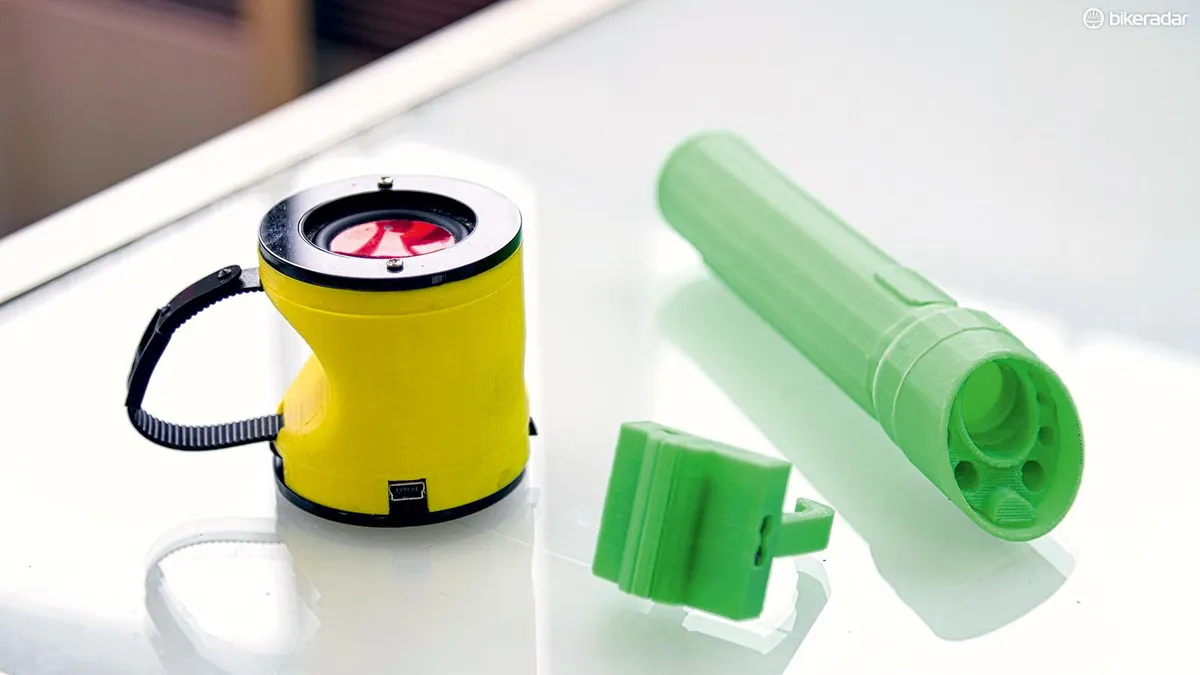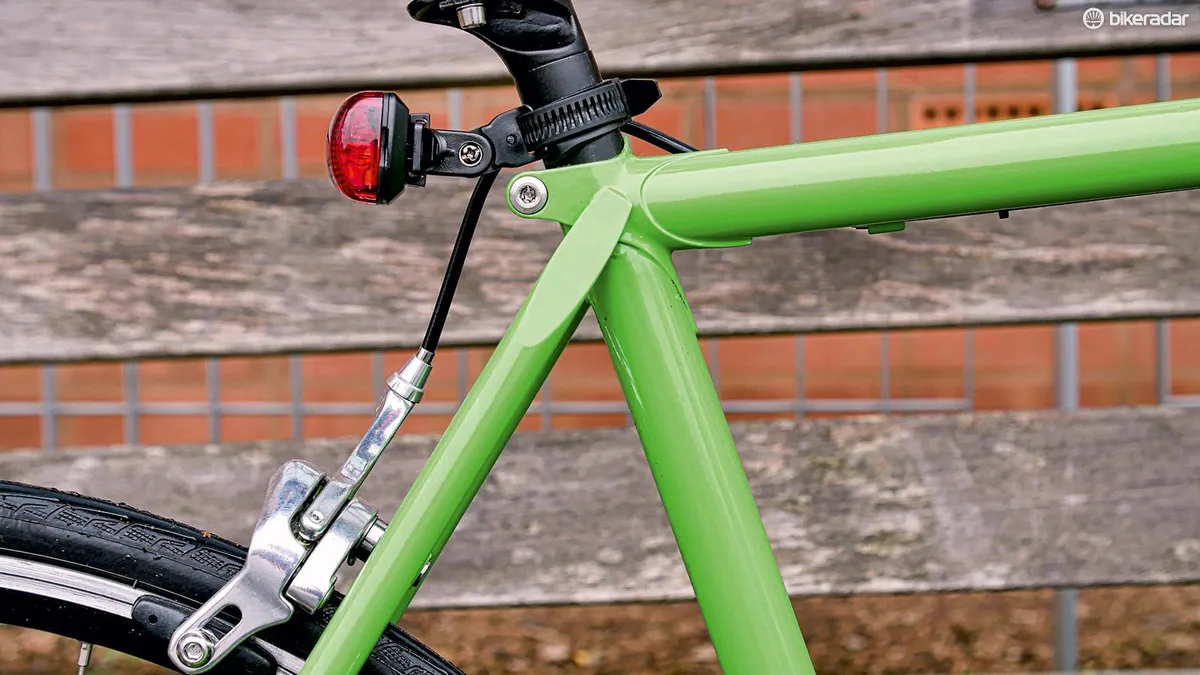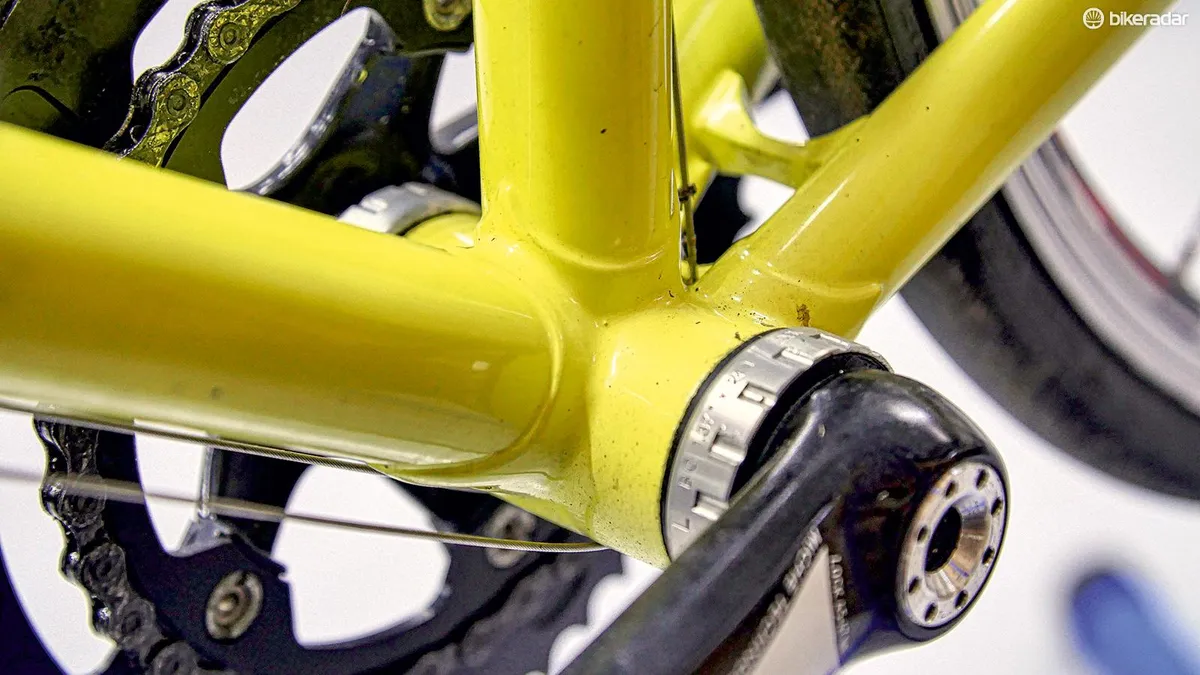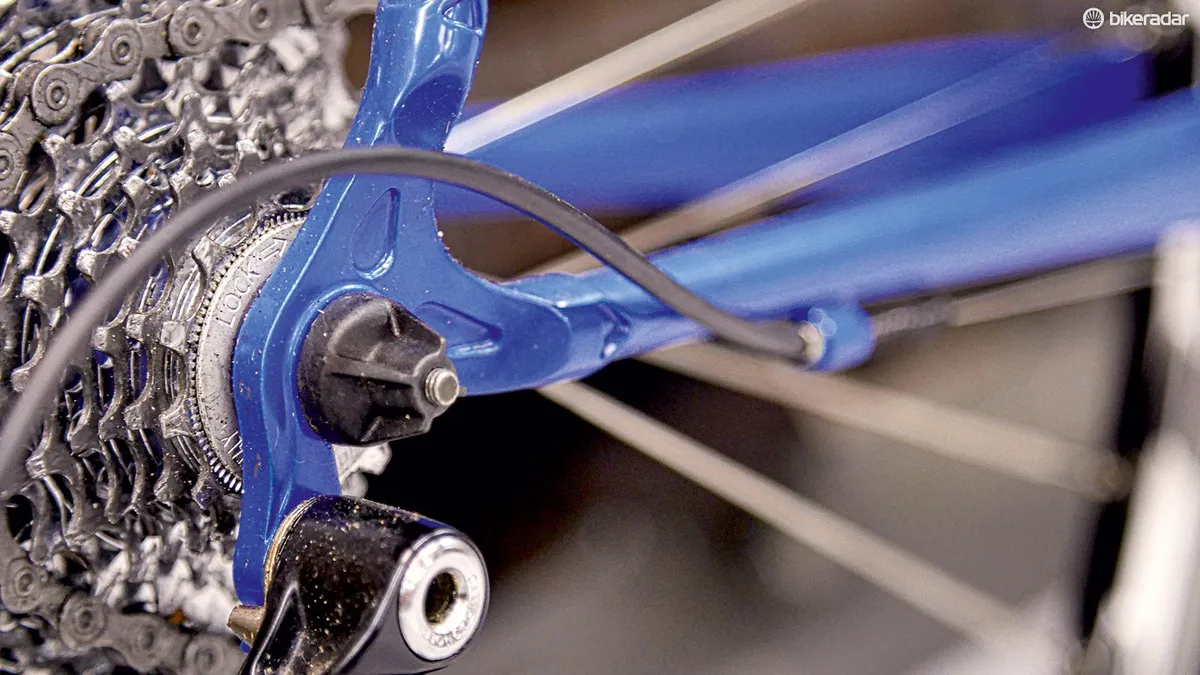Nestled in the heart of Shropshire is a traditional grammar school with a modern attitude about teaching the academics of the future. In an environment focused on maths and science is a department that has a history of fighting for attention, respect and GCSE-level students — the Design and Technology (D&T) department.
- Building the perfect hill climb bike
- A bike better than the professionals
- The right tools for the job: building an affordable home workshop
We have all heard stories of that one teacher, the one who comes along once in a blue moon, who gives their life and soul for their teaching, who breathes life into their lessons and whose passion will leave an imprint on their pupils years after they have left the school. Cue Mr Andrew Jones, head of D&T, whose love of his subject, of educating and of the bicycle, is revolutionising the department and giving the children he teaches skills for life that many grown adults can only dream about.
“Teaching can sometimes begin to feel like Groundhog Day if you don’t create change,” Jones tells us, and he is speaking from experience having given 12 years to Adams’ Grammar School. And change he has created, by effectively turning the D&T department from what was once a cabin at the back of the grounds competing for GCSE students into a frame building workshop that is having a far-reaching effect on the kids beyond the walls of the classroom; up to 60 miles beyond, in the case of Andrew Campbell who regularly meets a friend to ride out into the countryside on the bike that he built himself.
Building the bike
Where it all began
Let’s go back to the beginning and tell the story as it unfolded, from an unlikely idea initiated by Jones in 2012 that was soon backed by the enthusiastic staff around him. Jones was already building frames in his own time under the brand name Moss Bikes. It was a sideline that he kept very separate from his teaching job and for a while he led something of a double life until it clicked — he could teach the pupils how to make bikes, too!
To design the bike, first they must come up with a brand identity: Who is the bike for? What must it do? What other bikes inspire you?
To some frame builders, the idea that this mythologised art could be rolled out in a GCSE syllabus might seem like a breakaway from the guild but a friendly phone call to Andrew Denham from The Bicycle Academy (a community bike building workshop) verified his position on the democratisation of skills. A chat with the deputy head became a Powerpoint presentation to the governors, which was then repeated to the department staff and finally explained to the pupils. It became a reality very quickly, as each stage was met with a resounding ‘yes’. It was a wonderful starting point, but suddenly there was a lot of pressure to make it work.
The handful of year 10 students who took up the subject in 2012 were told that over the course of the next two years they would be tasked with creating a road bike brand, designing their bike on CAD software and working out the necessary compromises, culminating with building the frame and assembling the parts into a fully functioning bicycle.
The course is marked the same as any other product design GCSE course in the country but the pupils at Adams’ also end up with skills in welding, geometry and costings, as well as extra confidence and independence.
Designing the bike
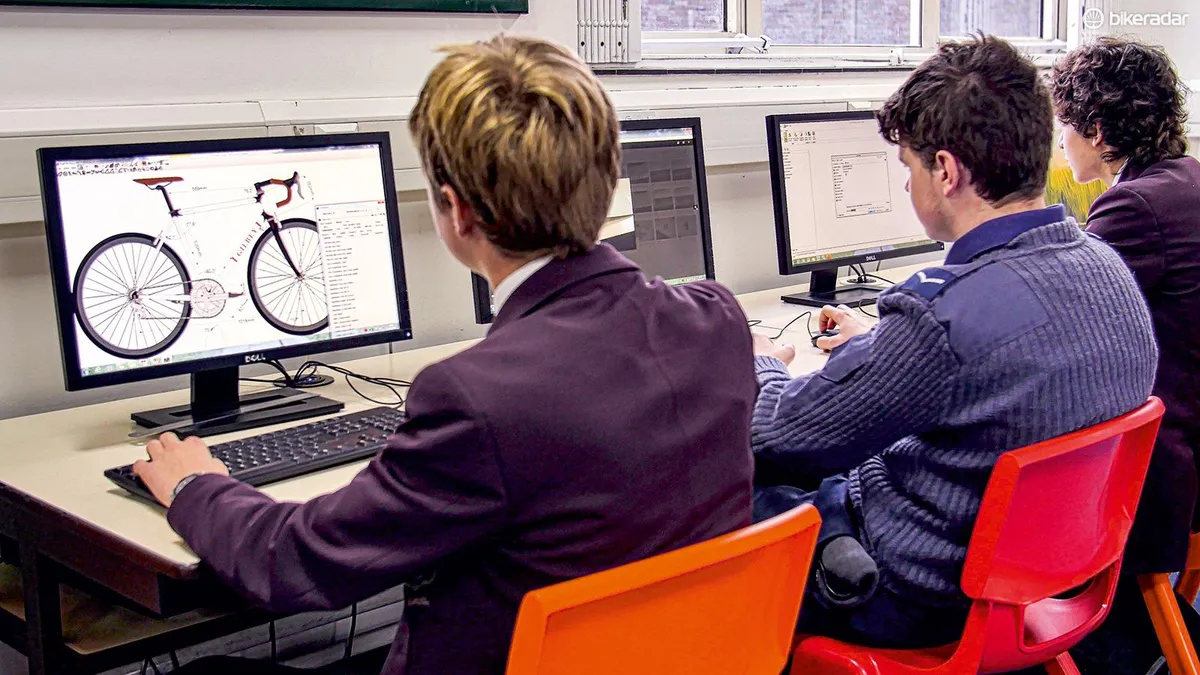
To design the bike, first they must come up with a brand identity: Who is the bike for? What must it do? What other bikes inspire you? They design their own headtube logo, then use CAD software and a lazer cutting machine to make curved metal headtube badges.
The really time consuming task is working in CAD to create a frame that fits the builder’s measurements and specification and can be built with pre-set lugs. Jones has chosen to use lugs simply because it is the safest and strongest method for a young frame builder as it avoids the danger of weak welds holding the bike together. The problem with bought lugs is that they come with pre-set angles, so any number of adjustments need to be made in the design process as the student compromises between their perfect angles and those possible with the lugs.
Careful thought also goes into the choice of parts to put on the bike, how they can affect the riding position and, most importantly, the final build cost. These are real life problems that start the students thinking about real life solutions at an age when many still have everything done for them.
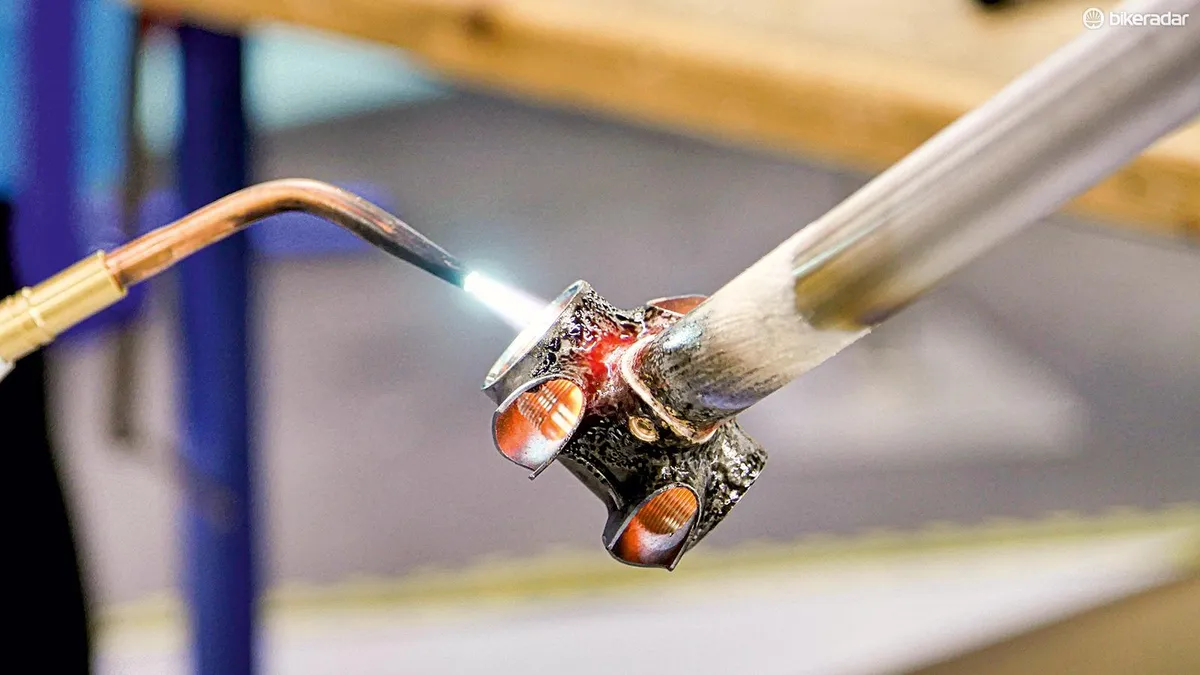
Welding the lugs to the tubing happens in the workshop, taught by the D&T teachers, not always by Jones. It meant that in the first year, the teachers were also being taught and were only one step ahead of their pupils. As cycling enthusiasts themselves, they’ve loved every minute. Jon Clark has been a follower of the fixed gear scene since it exploded into fashion in the early 2000s and Dan Kaye is a mountain biker, whose distaste for road cycling evaporated after he built his own bike and started commuting into school on it. Goggles on and blow torch held by two pairs of hands, each student masters the art of welding until they are solely in charge of the final joints.

The frames are sent away for powder coating locally. After that, it’s time to build up the bike. At this point, says Jones, the kids often start rushing to finish their bikes, eager to ride them. They now look like a real, usable product that screams freedom to a 15-year-old in a classroom. The joke is that when the GCSE examination officer came in to judge the first run of bikes, he walked out without having marked them, claiming that “They’re all the same.”
To the untrained eye, looking at a red, blue or yellow road bike, there was nothing to say how much of it the student had thought about themselves. The reality, of course, is that nothing could be more personal and individual than these collections of precise measurements, personal choices and considered compromises.
Future results
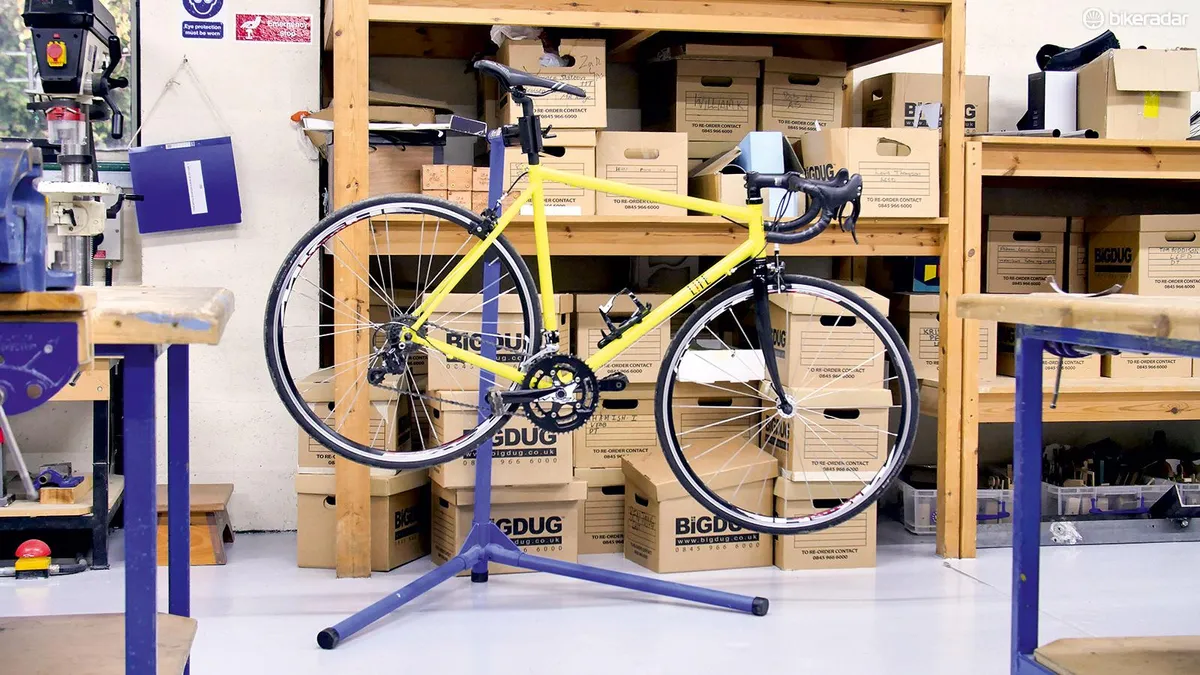
The rewards for the children and staff have been plentiful. For the staff, they have broken their Groundhog Day; they now get to mix their personal interests with what they get paid to do, and the passion and enthusiasm in the D&T department is unlike any school that I have ever been to.
As for the pupils, most of them have no idea how special and unusual their opportunity is but it’s clear to see that they thrive in the environment. In a school focused on academia, here they are pushed to think creatively and use their hands practically. They are given unique attention and liberty to create something that they actually want and will use.
And they really do. We spoke to some of the sixth-formers who completed their bike builds last school year and asked them if they had used their bikes much — all of them had. Now that the project has expanded to include mountain bike builds, the growth of passion and use will open up to a wider group.

We know what you’re thinking, that this is only possible for a privileged few. Actually, no. Adams’ Grammar School receives the same funding as other state schools, albeit in an affluent area where the parents are heavily invested in their children’s education. The goal for Jones would be to prove the project in another school, where the environmental opportunities are not the same.
Once the frame building class has been running for a few years, the school will be able to get cheaper pricing on parts and tubing, and other funding can be tapped into. For example, Adams’ Grammar can prove that this project has had further positive effects: more staff and pupils are now riding to school and the younger kids are inspired and excited about cycling, which opens doors for different sources of funding.
These pupils’ real privileges are their school’s open-mindedness, the Design and Tech department’s enthusiasm and, most of all, having Jones as their teacher.
Watch Anna Glowinski race her custom built Adams' Grammar School bike
